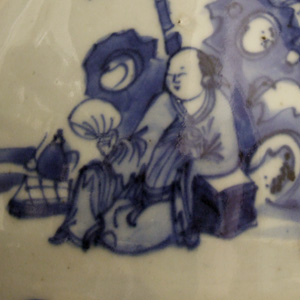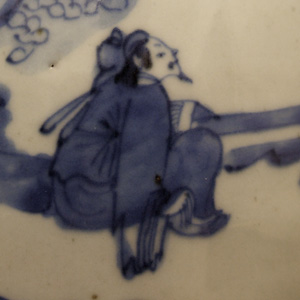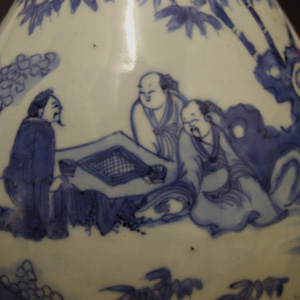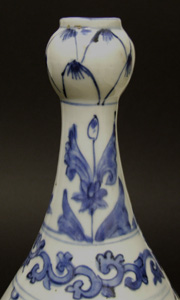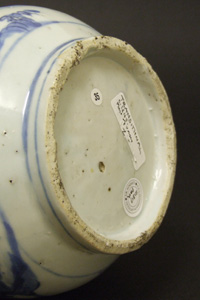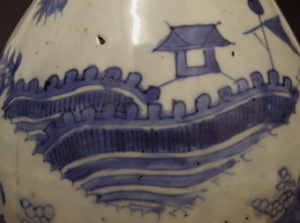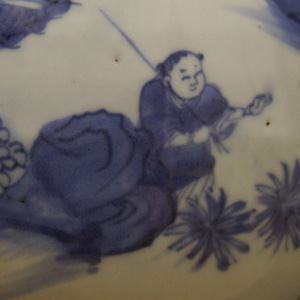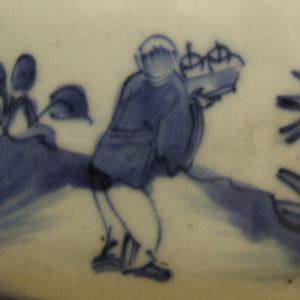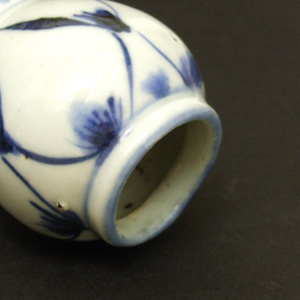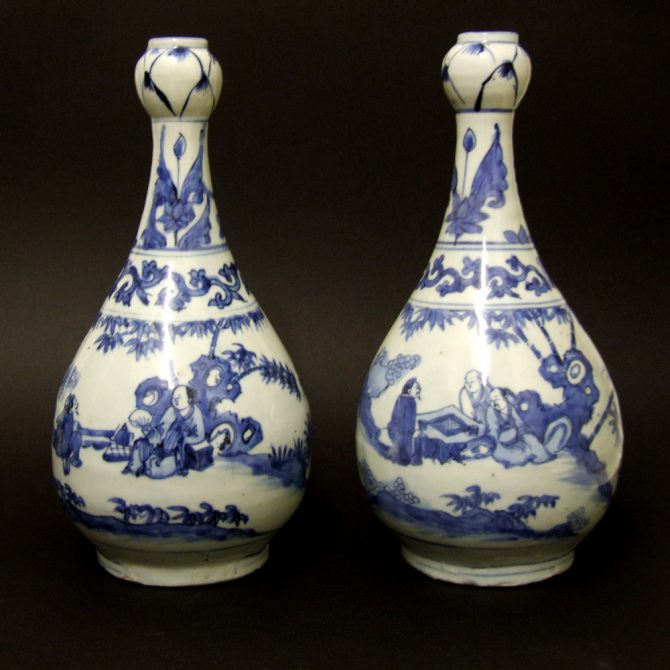
TIANQI or CHONGZHEN c.1620 – 1644 Transitional Porcelain
A Pair of Fine Transitional Porcelain Blue and White Garlic Topped Bottle Vases, Late Ming Dynasty, Tianqi (1621-1627) or Chongzhen (1628-1644) Period.
SOLD
- Condition
- Perfect.
- Size
- 29.5 cm (11 1/2 inches)
- Provenance
- N/A
- Stock number
- 21817
- References
- The dating of the present items is maybe not as straight forward as it appears. Most vases of this type are dated to the Tianqi (1621-1627) period, for example the vase in the Butler Family Collection, illustrated in : Chinese Porcelain from the Butler Collections (Sir Michael Butler, Musee National d`histoire et d`art Luxembourg,2008) page 38, plate 11 and also illustrated in Seventeenth Century Chinese Porcelain From The Butler Family Collection (Sir Michael Butler, Margaret Medley, Stephen Little, Art Services International,1990) page 42 plate 6. Two further examples with earlier dating are worth mentioning, one with an usual faceted form, dated to the Wanli period, see : Exhibition of Two Hundred Years of Chinese Porcelain 1522 - 1722 (S.Marchant & Son, London. June 1998) page 40, plate 23 and the a further vase as being from the Wanli period and dated c.1590 - 1620 is in : Catalogue of Late Yuan and Ming Ceramics in the British Museum.(Jessica Harrison-Hall.The British Museum Press, 2001. ISBN 0-7141-1488-X.) page 287, plate 11:24. The rather sketchy drawing of these vases together with the potting does seem to link them to known Tianqi porcelain, however to my mind the form, loose painting, as well as the painted lotus-tops do appear to be similar to some Chongzhen porcelain, for example the pair of vases from the Hatcher Cargo of c.1644 in our `Sold` items section, see stock number 20773. Also it seems the upright Islamic style flowers on the neck and the subject matter, as well as its arrangement, are very similar to what Sir Michael Butler has termed `High-Transitional`, but just painted in a looser style. Maybe this group of vases are a precursor of the `High-Transition` style or perhaps they are contemporary with them, but painted in a different style, I am not sure, hence our dating of Tianqi to Chongzhen.
Information
The Bulbous Tops of these Vases are Painted to Resemble the Opening Bud of the Garlic Flower. Below that is a Border of Formal Flowers, Probably Inspired by Islamic Art. The Main Register is of Scholars in a Garden with Bamboo and Scholar`s Rocks Playing Weiqi (Chinese chess, sometimes called Go) as well as Resting While Assistance Bring them Drinks. The Reverse of these Continuous Scenes Shows a Walled Town.
Scholar`s Rocks :
Chinese scholars` rocks, also known as scholar stones or viewing stones, are small shaped or naturally-occurring rocks appreciated by Chinese scholars from the Song dynasty onwards, and quite frequently found in traditional Chinese gardens.
The most highly regarded stones are lingbi rocks, from Lingbi County of Anhui Province, with the finest examples dating from the Ming dynasty and Song dynasty. Taihu rocks are also prized, and are commonly used as garden stones. They influenced the development of Korean stone art and Japanese suiseki aesthetics and styles and were an important part of Confucian art. Natural stone and rock formations, with no artificial carvings, are preferred. Rocks would sometimes be carved and then thrown back into a lake so that any markings could be washed away. Scholars rocks can be any colour, and contrasting colours are not uncommon. Sometimes they feature painted patterns, which can be of any subject, either natural or abstract. The size of the stone can also be quite varied: scholars rocks can weigh either hundreds of pounds or less that one pound. Subtlety of colour, shape, and markings is also desired, as is beauty of texture and shape. Scholars stones are usually reminiscent of someone or something, or it may convey a spiritual nature that moves viewers in some way. They are usually set upon a stable surface, such as a rosewood pedestal that has been carved for them.
Weiqi :
Go known in Chinese as Weiqi and Go in Japan, is an ancient board game for two players that is noted for being rich in strategy despite its simple rules. The game is played by two players who alternately place black and white stones on the vacant intersections of a grid of 19×19 lines. The object of the game is to control (surround) a larger portion of the board than the opponent. Weiqi originated in ancient China more than 2,500 years ago, and although it is not known exactly when the game was invented, by the 3rd century BC it was already a popular pastime, as indicated by a reference to the game in the Analects of Confucius. Go reached the West through Japan, which is why it is commonly known by its Japanese name. From http://en.wikipedia.org/wiki/Go_%28game%29
